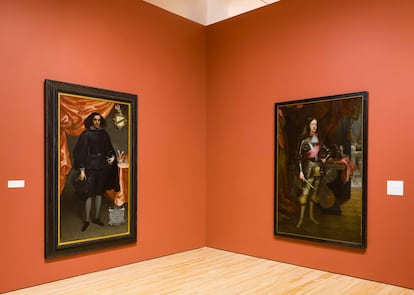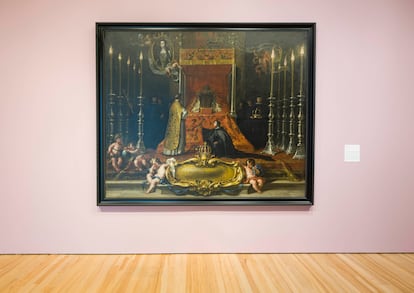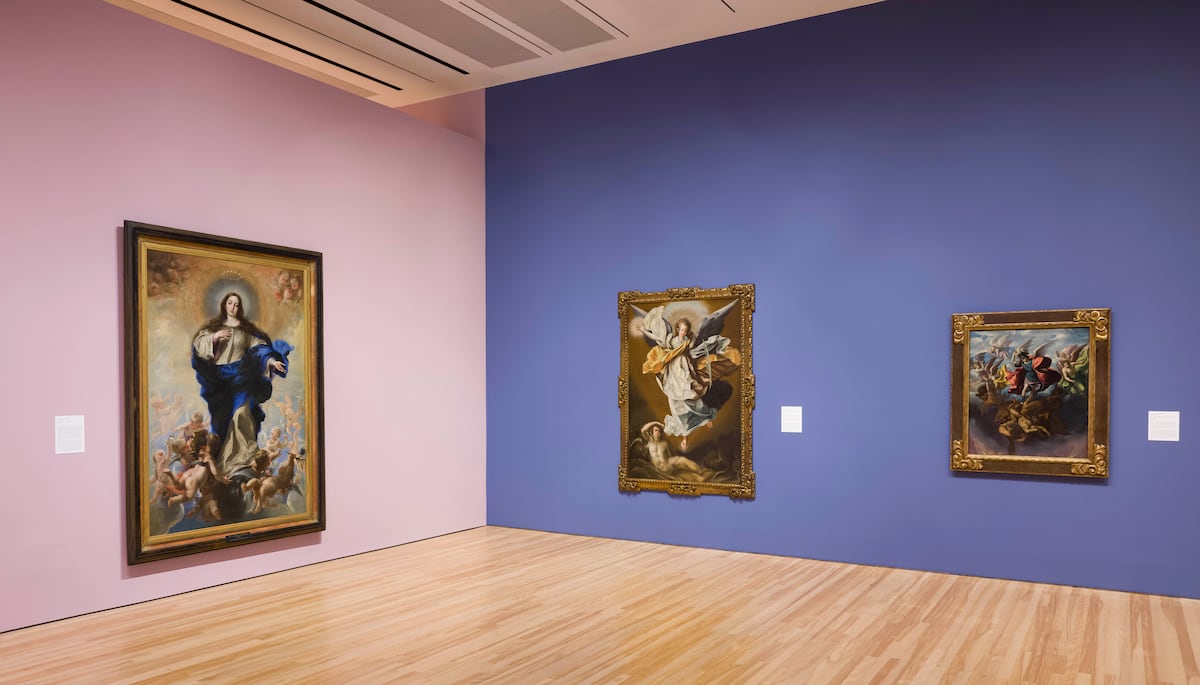A constellation of Virgin Mary figures, saints, and court portraits from the Spanish Golden Age — from the late 1400s to the late 1600s — have descended upon the cultural heart of Texas. The Blanton Museum of Art at the University of Texas at Austin has opened Spirit & Splendor: El Greco, Velázquez, and the Hispanic Baroque, an exhibition that offers a reconfigured map of Spain’s artistic heyday by bridging the gap with the Americas.
The exhibition, open to the public until February 1, 2026, brings together 57 works from the Hispanic Society Museum & Library in New York, an institution founded in 1904 by Archer M. Huntington and closely associated with the Blanton institution, which bore his name for almost two decades. The exhibition is a traveling one that has already been to Boca Raton in Florida and to Milwaukee, but in its Texas version it has taken on a new dimension. In addition to showing for the first time masterpieces by Velázquez, El Greco, Zurbarán and Murillo, the show includes works from New Spain and the Viceroyalty of Peru that underline how the Baroque style was also an American language. For the Blanton, this connection was particularly relevant.
“We wanted the exhibition to be understood not only as a tribute to the Spanish monarchy, but as a space for dialogue between two shores,” explains Holly Borham, curator of prints, drawings, and European art at the Blanton. Her colleague Rosario I. Granados, a specialist in the art of the Americas, complements the idea: “Many of the painters included were born in Seville, traveled to Mexico, and developed their own style there. Our intention was to contextualize and situate these works on equal footing, not as a colonial appendage.”
The tour of the galleries also expands traditional definitions of the period with a sculpture by Luisa Roldán, La Roldana—the first documented woman sculptor in Spain—and an engraving derived from a Michelangelo drawing that illuminates El Greco’s Italian connection. Furthermore, the museum has added chronologies, artist family trees, and maps that allow visitors to understand the circulation of ideas, families, and styles in a world that, already in the 17th century, was much more global than commonly thought. “We are fortunate to have both colonial and European collections, and that gives us the authority to establish a genuine dialogue between the two,” says Borham.
The result is a mosaic that combines El Greco’s Pietá with its immediately recognizable essence, with a portrait of Saint Michael by Luis Juárez, a Sevillian painter active in what is now Mexico in the same century. The contrast is not only geographical, but also one of materials and purpose: while large oil paintings shone in Imperial Spain, the American viceroyalties also saw the proliferation of a more resourceful use of copper plates as a base for works that glittered like jewels in the sacristies. For Borham, this is the greatest treasure of the exhibition. “On the reverse there are engravings that look like devotional prints, a fascinating object that serves as a hinge between Spain and New Spain.”
In its quest to underscore this duality, the exhibition also allows viewers to compare two versions of Our Lady of the Immaculate Conception: the monumental one, created by the brush of a court painter in Madrid, and the smaller, almost intimate one, intended for religious education in the New World. The image is identical, but the context is radically different.
 Works ‘Bernabé de Ochoa and Chinchetru’, and ‘Charles II in Armor’, by Juan Carreño de Miranda.Blanton Museum of Art
Works ‘Bernabé de Ochoa and Chinchetru’, and ‘Charles II in Armor’, by Juan Carreño de Miranda.Blanton Museum of Art
The Texas connection is also present. Among the pieces in the exhibition is a work by José de Páez, a New Spain painter known for depicting the San Sabá mission, built in the 18th century just two hours from Austin. “We wanted to show how what was happening in colonial Texas resonated in Mexico City and beyond,” Granados emphasizes. In that sense, the Blanton also incorporates the founding of the first Spanish missions in what is now Texas into the exhibition’s timeline. “It’s a way of remembering that Spanish here is not just a language, but also part of history,” Borham notes.
As a university museum, the Blanton has also conceived the exhibition as a teaching tool. The bilingual texts aim to appeal to both students of Spanish literature and young people from the city’s language immersion programs. “We’re interested in generating a conversation, even about words like Baroque, which are sometimes used vaguely,” says Granados.
The dialogue isn’t limited to the museum’s walls. The public program includes talks by specialists such as historian Amanda Wunder, who will address Seville’s Golden Age fashion from a social perspective, and a visit by a Lima scholar José Luis Lazarte, who will discuss enconchado painting. The intention is to balance the perspectives: from the Spanish court to the colonial workshops. Thus, the exhibition and everything that will surround it in the coming months echo the transatlantic Golden Age, which reclaims itself as such from an unexpected Texan setting.
 Work ‘Funeral of Queen Maria Luisa of Orleans (1689–1690)’ by Sebastián Muñoz.Blanton Museum of ArtPractical information
Work ‘Funeral of Queen Maria Luisa of Orleans (1689–1690)’ by Sebastián Muñoz.Blanton Museum of ArtPractical information
Spirit & Splendor: El Greco, Velázquez, and the Hispanic Baroque
Venue: Blanton Museum of Art, The University of Texas at Austin
Dates: August 24, 2025–February 1, 2026
Works: 57 pieces from the Hispanic Society Museum & Library, plus works from the Blanton collection
Guided Tours: In English and Spanish, select Tuesdays, Saturdays, and Sundays
Highlighted Events:
September 14: Amanda Wunder talks on fashion in Golden Age Seville.
October 24: B Scene, an evening party with music, art, and activities.
